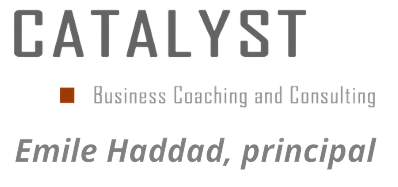Presence and the Foggy Edge of Ourselves
 What does authentic engagement mean in the context of being a leader?
What does authentic engagement mean in the context of being a leader?
Most of us are culturally trained to be externally focused; we are unconsciously driven by mental constructs and a belief system built over the years to help us maneuver through the complexities of life. These constructs predispose us to certain assumptions designed to keep enforcing our belief system and our relationship to reality … “we have come to know certain things and we like what we know and want to keep it that way; it makes life more manageable.” This system of beliefs makes us feel protected from life’s perceived risks when in fact it is providing blinders that hinder our clarity and restrict our effectiveness in the world.
When we are externally focused we become unable to be present to what is “alive” in front of us in the moment; instead we are more likely to be responding to projections of our assumptions and mental constructs. In essence we tend to be in a trance state in which things are a few degrees separate from our full awareness; it’s as if we lose the eyesight to see things clearly. It’s a foggy place in which we only sort and filter for the familiar and the things we want to hear or see. In a way we are not quite connected to our center, nor are we connected to the environment around us; we are sitting at the edge of ourselves,
Reality at this foggy edge of ourselves leaves us cut off from the vitality of our authentic life force; it tends to be thin and brittle. At this place we are more likely to defer to our well-crafted professional persona with its pre-determined tools, analytic criteria, forms and processes. We are not aware that we do not inhabit our center; we are therefore untethered and ungrounded, easily distracted and lack a sense of true presence with others. From the perspective of those we provide leadership for, they feel managed rather than joined-with, teamed up with and understood; they may experience being directed to do the work but not truly guided or encouraged to rise to their highest and best.
So what is required for a more authentic engagement? Initially we need to recognize that the filters and mental constructs we have erected around us are a scaffolding designed to keep us from experiencing the vulnerabilities of life, ours and those of our colleagues. This is a normal human response, however these filters obscure us from the core experiences of reality, a reality in which each other’s humanity can be touched and attended to; an authentic experience in which our human frailties and vulnerabilities are accepted and attended to rather than avoided. These vulnerabilities are at the center of people’s essential truth and courage; they are common to the human condition and when acknowledged in modest ways can open immense pathways for trust and loyalty.
Loyalty and trust in one’s leadership are essential elements of a positive corporate culture teeming with innovation, creativity and enthusiasm to produce extraordinary results with everyday limitations.
Part Two of this article will explore a particular path towards authentic engagement.
